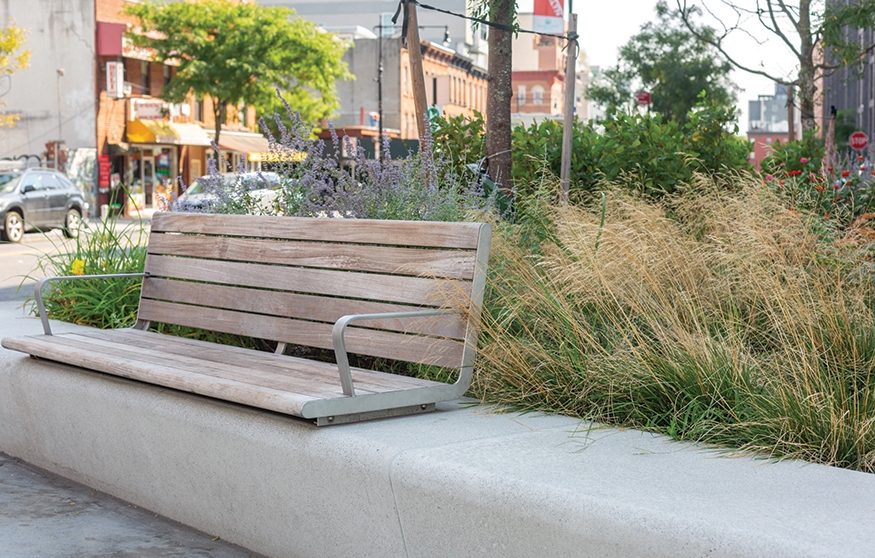Any planting area within a plaza that is raised above grade. The size and shape of the area may vary from site to site and is typically employed where there are underground constraints. The majority of the soil volume is contained within the above-ground structure.

Myrtle Avenue Plaza, Myrtle Avenue between Hall Street and Emerson Place, Brooklyn
Benefits
See Benefits of Plantings in the ROW in the Introduction and In-Ground Planting Area
- Above-ground planting structures allow the integration of other design elements such as seating and lighting
- Raising planters creates opportunities for planting where there are underground constraints
- Raised planters create more substantial barriers from vehicles
- Raised planters provide protection from winter salt spray
Considerations
See considerations for In-Ground Planting Area
- Plant selection should be sensitive to the limited amount of soil available for root growth in a raised planter. Due to the limited soil volume, plants should be more drought-tolerant and will need to be watered more often
- Soil is less insulated in raised planting beds; freeze/thaw cycles will be more extreme in winter; select plants that are one to two USDA zones hardier to survive these conditions
- Any plantings not maintained by DOT, DEP, or Parks will require a maintenance agreement
Design
See design guidance for In-Ground Planting Area
- Consider the type of soil that will be used. Specify a soil with good water and nutrient holding capacity. See Soils in General Guidelines
- Positive drainage below the planting soil is essential. Any impermeable layers of concrete or asphalt must be removed or appropriately designed weep holes must be included
- Raised structures allow for greater variation in topography and a larger variety of seating options
- Planting beds, as a general rule, should be limited in height and maintain visual and physical openness
- Additional seating can be provided by utilizing the raised structure as a seat wall; avoid creating long walls that impede pedestrian circulation and take into consideration potential maintenance issues such as skateboard use
- Raised planting areas can be designed to creatively accommodate or incorporate required security measures; consider impacts of security infrastructure (foundations, spacing requirements, etc.) on species selection
Plants
See Plant Finder

